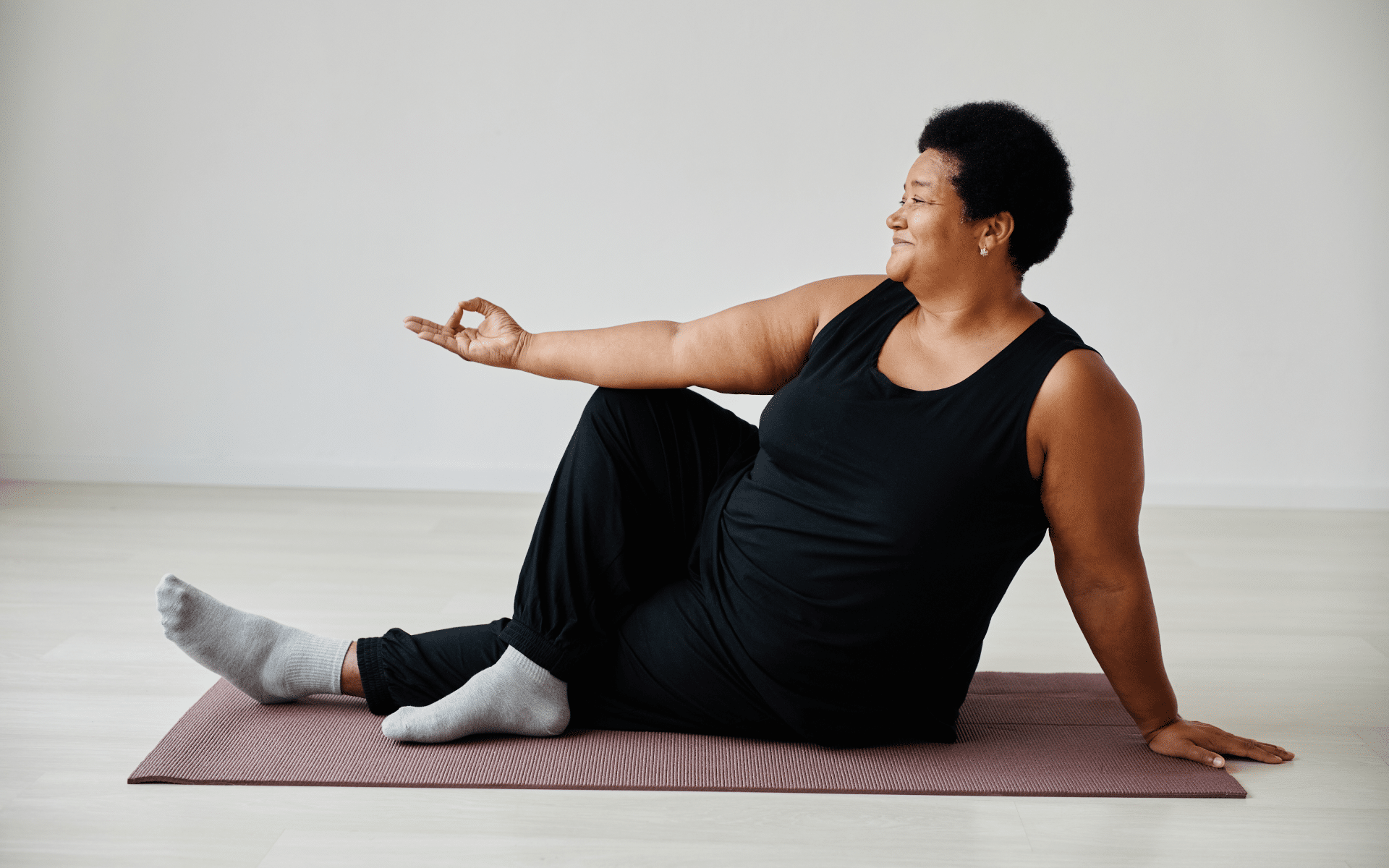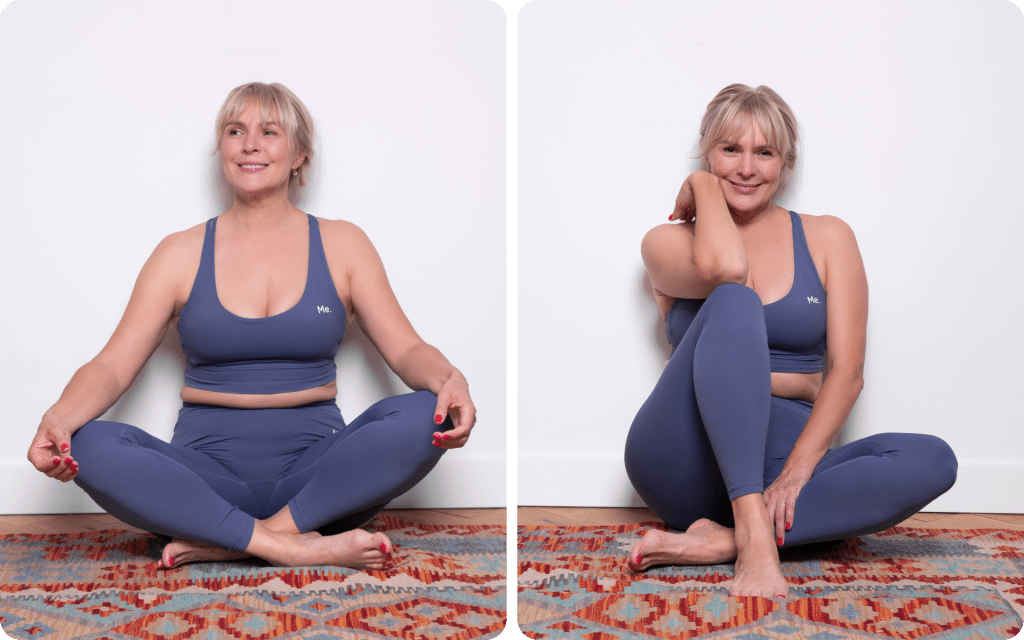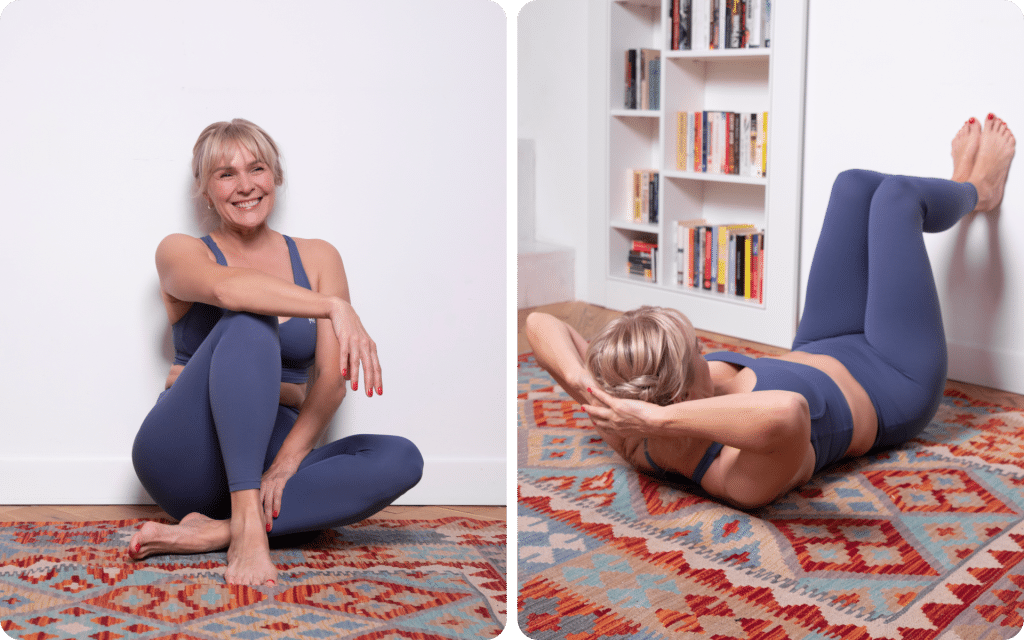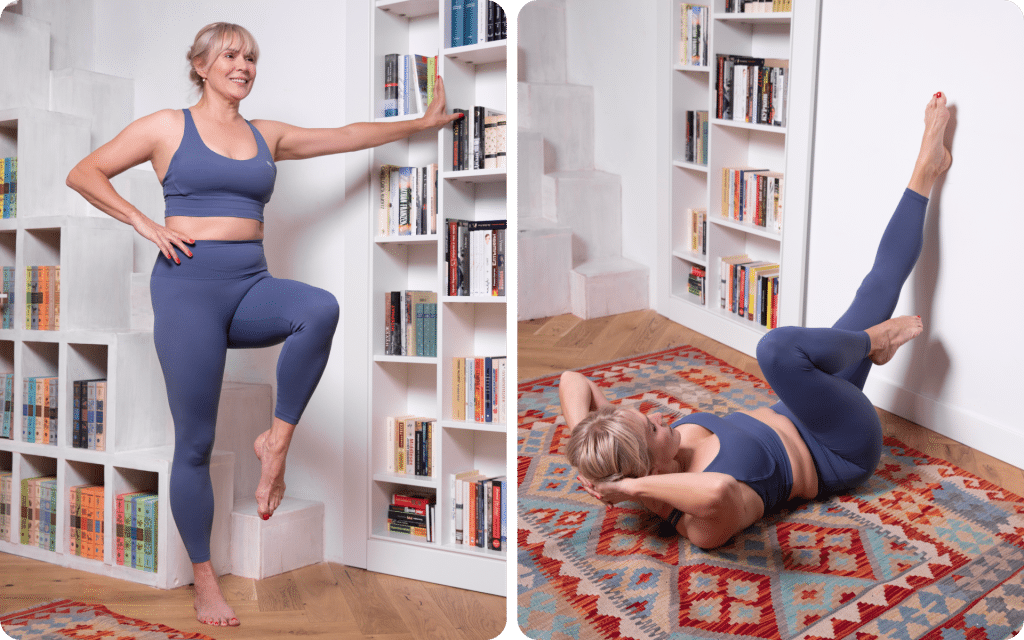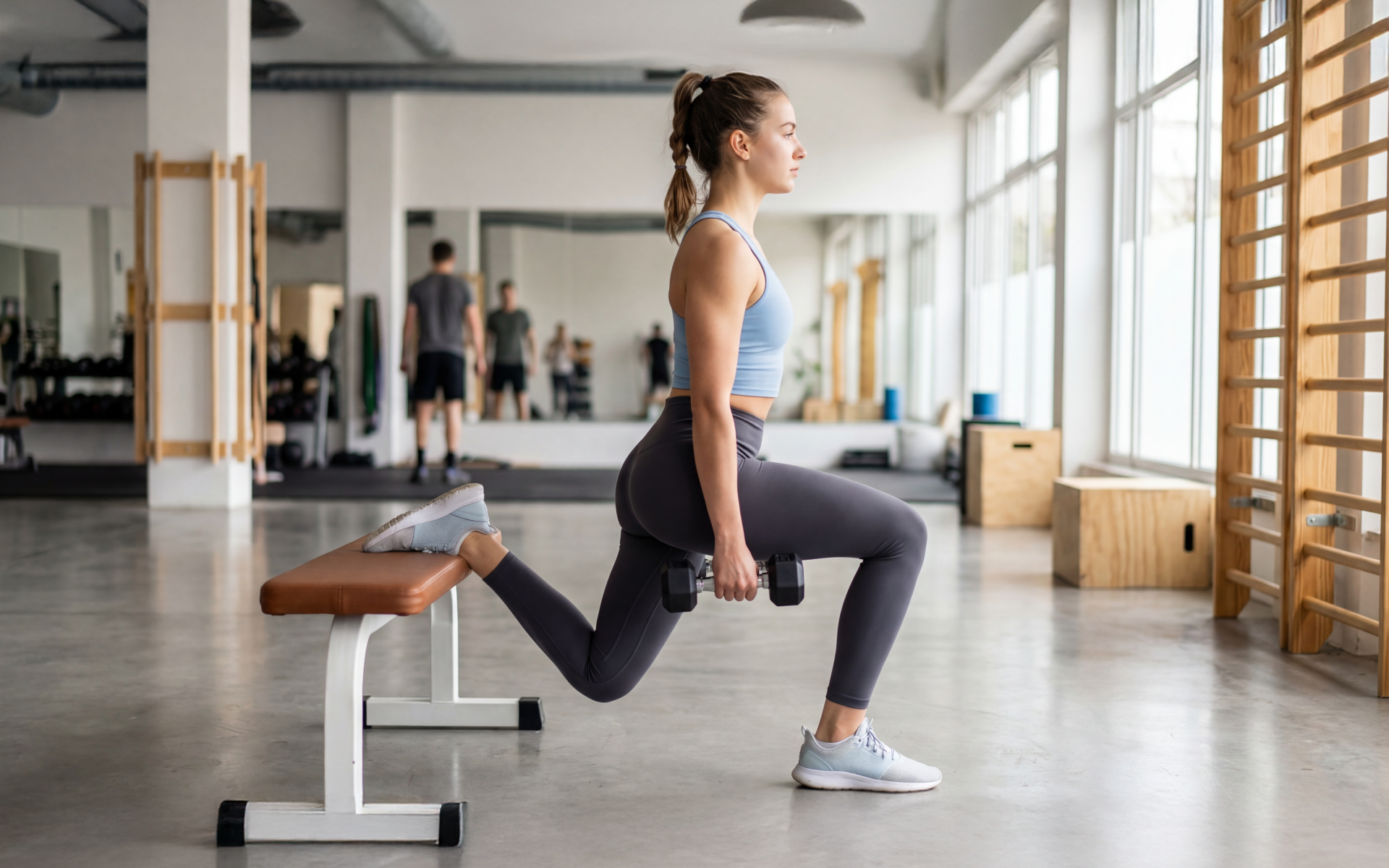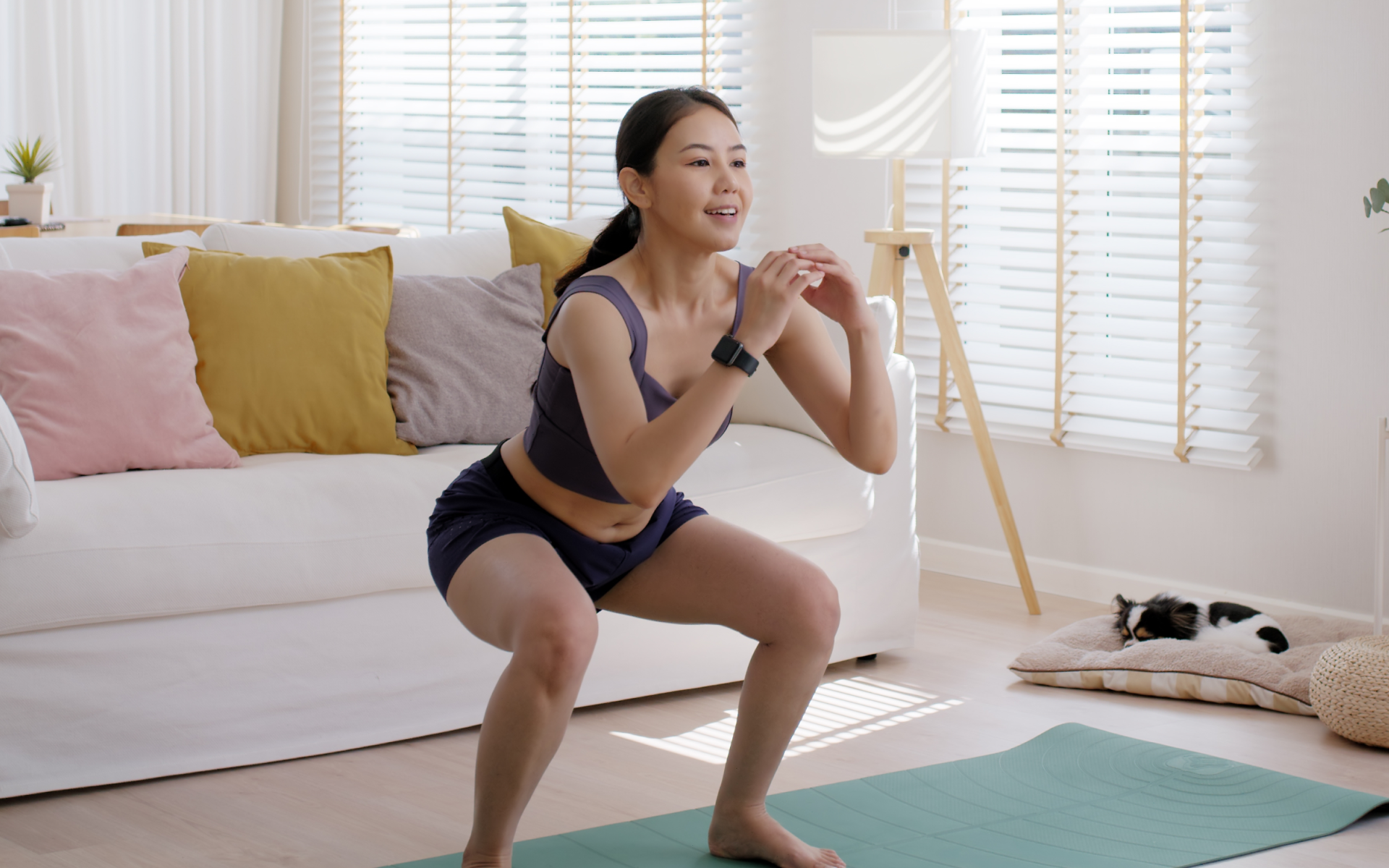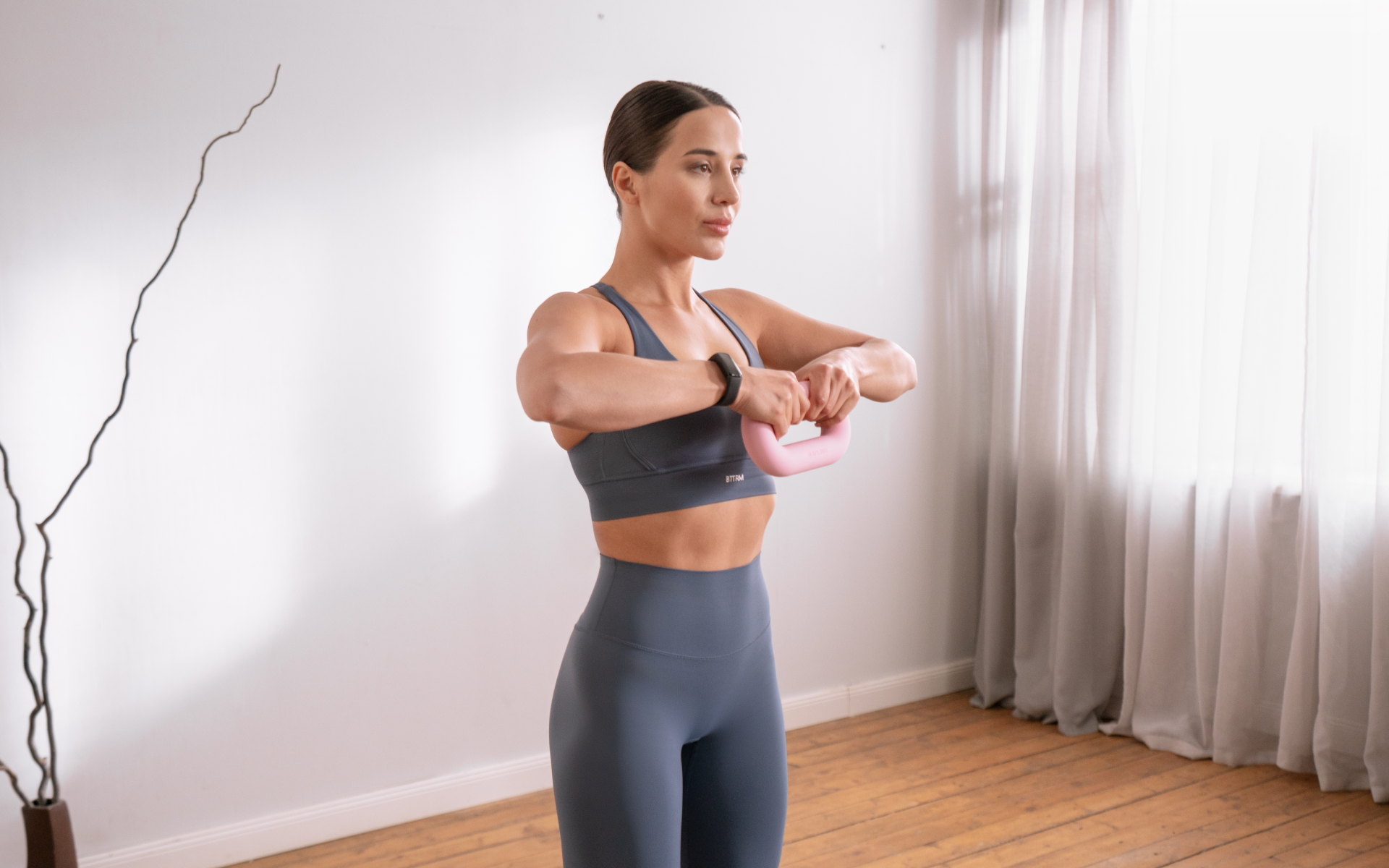Strength training, also known as resistance or weight training, involves using resistance, such as:
- Weights
- Resistance bands
- Bodyweight exercises
Resistance workouts involve working against an external load to increase muscle size and strength.
This form of exercise helps improve muscle strength, endurance, and mass.
Strength training is an essential form of exercise for people of all ages and becomes even more crucial as we age.
Incorporating strength training into a workout routine is highly recommended for a 60-year-old who wants to stay fit and healthy.
This guide will discuss the tips and benefits of strength training for a 60-year-old at home. We will cover everything from understanding the basics of strength training to designing a suitable workout plan that fits your needs and goals.
Can A 60 Year Old Female Build Muscle?
Scientific research supports the idea that a 60-year-old female can build muscle.
Studies have shown that resistance training effectively increases muscle mass and strength in older women.
For instance, a study involving post-menopausal women demonstrated significant improvements in muscle function and strength after a 12-week resistance training program using resistance bands (1).
Another study highlighted that long-term engagement in resistance exercises benefits muscle quality in individuals over 50 (2).
An 8-week resistance training intervention using elastic bands showed increased strength in older women, although it had limited effects on health-related quality of life (3).
These findings suggest that older women can effectively:
- Build muscle
- Improve strength
- Enhance their overall physical function with appropriate resistance training.
Whether you’re a workout beast or just a beginner making your first foray into the world of fitness and dieting – BetterMe has a lot to offer to both newbies and experts! Install the app and experience the versatility first-hand!
How To Build Muscle At Home At 60 (For Women)
Building muscle at 60 might sound challenging, but the good news is it’s achievable, even in the comfort of your home. The human body can build muscle at any age, provided you follow the proper steps.
Here’s a complete guide to help you start your strength-training journey safely and effectively.
1. Get Clearance First
Before starting any exercise routine, it’s essential to consult your doctor.
You need the advice of a healthcare professional, especially if you have any health conditions. A health check ensures you can safely begin a training program without risking injury.
Beyond clearance, your doctor can also advise you on exercises that suit you based on any underlying conditions.
2. Understand The Basic Principles Of Strength Training
Here are a few foundational principles to keep in mind as you work toward building muscle:
- Progressive Resistance: Strength training applies resistance to your muscles, making them work harder. As your muscles grow stronger, you increase that resistance (4).
- Volume and Frequency: Aim to work each muscle group twice a week. Each session can include 10-15 repetitions of an exercise for 2-3 sets.
- Rest and Recovery: Your muscles need time to repair and grow. Incorporate rest days between training sessions (5).
3. Build A Safe Home Workout Plan
You don’t need fancy gym equipment to get started.
Here’s how to approach strength building at home:
Warm-Up
Start with 5-10 minutes of gentle movement to prepare your body and reduce the risk of injury. You can:
- March in place
- Do arm circles
- Perform light active stretches.
- Avoid static stretching before a workout.
Strength Training Exercises
Focus on compound movements that target multiple muscle groups.
Here are some beginner-friendly exercises you can do at home:
- Chair Squats: Sit and stand from a sturdy chair to build leg and glute strength. To add resistance, hold small weights (or even water bottles).
- Push-Ups: Start with wall push-ups to build upper body strength before progressing to knee or traditional push-ups.
- Bicep Curls With Resistance Bands: Resistance bands are affordable and practical for at-home training.
- Seated Rows With A Band: Attach a resistance band to a secure anchor and mimic a rowing motion to strengthen your back.
- Step-Ups: Use a low stool to step up and down, which works your legs and improves balance.
- Plank Holds: Start with 10-15 seconds on your knees and focus on core engagement. Gradually increase the time.
Cool Down
End your workout with light static stretching for the muscles you’ve worked.
Stretching improves flexibility and prevents muscle stiffness.
Read more: Chair Yoga Routine for Seniors: 8 Exercises for a Full-Body Workout at Home
4. Progress Gradually
One common mistake is doing too much too soon.
Start with:
- Smaller sets
- Light resistance
- Perfect your exercise form
Then, as you feel stronger, increase the weight, resistance, or number of repetitions. The key is to listen to your body—progression doesn’t happen overnight.
5. Stay Consistent
Consistency is more important than perfection. Aim for 2-3 weekly strength-training sessions.
To keep yourself accountable:
- Follow a structured plan
- Set small, realistic goals to stay motivated.
- Track your progress (e.g., writing down your reps and sets)
- Celebrate milestones like completing 10 push-ups or increasing resistance.
6. Don’t Forget Flexibility And Balance
Strength training isn’t the only piece of the puzzle. Balance exercises reduce the risk of falls, and flexibility training improves joint health.
Here are some additional exercises to add to your week:
- Yoga or Gentle Pilates: Great options for improving flexibility and muscle tone.
- Single-Leg Stands: Practice standing on one leg for 20-30 seconds.
7. Fuel Your Body
Nutrition plays a key role in muscle building, especially for older adults.
Here’s how to optimize your diet:
- Protein Is Key: It supports muscle repair and growth. Aim for a source of protein at every meal, such as eggs, lean meat, fish, tofu, or legumes (6).
- Stay Hydrated: Muscles need proper hydration to function well. Drink plenty of water throughout the day (7).
- Get Enough Calories: Even if weight loss is your goal, undereating can prevent muscle growth. Focus on nutrient-dense foods like vegetables, fruits, whole grains, and healthy fats.
This Best Diet For Women Over 60 focuses on nutrient-rich foods like leafy greens, lean proteins, whole grains, and healthy fats to support bone health and energy levels.
Consider Supplements (If Needed And Doctor Approved):
If you struggle to meet protein needs through food alone, a protein shake can help. Similarly, consult your doctor about vitamin D or calcium supplements if bone health concerns you.
8. Listen To Your Body
Pay attention to how your body feels during and after exercising:
- Mild soreness is normal as your muscles adapt.
- Sharp pain means you should stop the activity and reassess your form.
- Fatigue is okay, but joint pain is not. Adjust as needed.
9. Stay Motivated
It’s common to feel discouraged when progress feels slow.
Here’s how to keep going:
- Switch Up Your Routine: Add variety by trying new exercises or workouts.
- Buddy Up: Exercising with a partner (even virtually) keeps you motivated.
- Celebrate Non-Scale Wins: You may notice increased energy, better posture, or the ability to lift heavier objects at home.
10. Know The Benefits Beyond Muscle
By engaging in regular strength training, you’re not just building muscle; you’re:
- Increasing bone density and reducing the risk of fractures.
- Boosting your metabolism, helping with weight management.
- Improving balance, reducing the risk of falls.
- Enhancing mental health, as exercise releases feel-good endorphins.
How To Build Muscle At 60 Female At Home?
The best way to build muscle at age 60 is to slowly but consistently incorporate strength training into your fitness routine.
What is the best strength training for a 60 year old woman?
It starts with a warm-up, followed by compound exercises that target multiple muscle groups.
Gradually increase the intensity and resistance as you build strength.
Don’t forget flexibility, balance exercises, proper nutrition, and hydration to support muscle growth.
Here’s a sample 15-minute home workout plan for building muscle at 60:
Warm-Up (5 Minutes)
- March in place (2 minutes)
- Shoulder and arm circles (1 minute)
- Toe taps with gentle core twists (2 minutes)
Main Workout (8 Minutes) 2-3 times through
- Chair Squats (12 reps)
- Wall Push-Ups (10-12 reps)
- Bicep Curls with Resistance Bands (12 reps per arm)
- Side Leg Lifts (10 reps per leg for balance/core)
Rest for 30 seconds between each exercise.
Cool Down (2 Minutes)
- Forward fold stretch
- Seated hamstring stretch
- Gentle side stretches
BetterMe: Health Coaching app helps you achieve your body goals with ease and efficiency by helping to choose proper meal plans and effective workouts. Start using our app and you will see good results in a short time.
What Size Weights Should A 60 Year Old Woman Use?
When beginning any strength training routine, it’s always better to err on the side of lighter weights. Weight training workouts for women over 60 should focus on learning proper form and technique without risking strain or injury.
For most women beginning strength training at home, hand weights between 1-3 pounds are often just right for upper body exercises like bicep curls or shoulder presses.
For lower body exercises like squats or lunges, slightly heavier weights—like 5 pounds—may feel comfortable since your legs are naturally stronger.
Resistance bands or even your body weight can serve as gentle but effective options if unsure.
Perform a Test Set: Select a weight and perform 8-12 repetitions of your chosen exercise.
- The weight is too light if the last two reps feel very easy.
- The weight is too heavy if you can’t maintain proper form or finish the set.
- If the last few reps feel challenging but manageable, you’ve chosen a good starting weight.
Observe Your Form: The weight may be too heavy if you struggle to maintain good posture or alignment during an exercise. Fix your form first before increasing resistance.
Progress Gradually: Once a weight becomes easy—where you can do more than 12 repetitions without much effort—it’s time to step up.
One recommendation that could work is increasing weights by 1-2 pounds for upper-body exercises or 5 pounds for lower-body exercises.
However, progressing at your own pace and finding what works for you will be your best option.
We’ve compiled Stretching Exercises For Seniors to improve flexibility, reduce stiffness, and promote better mobility safely and gently.
Read more: Indoor Walking for Seniors: Simple 20-Minute Daily Routine for Health and Energy
How Often Should A 60 Year Old Woman Lift Weights?
For women in their 60s, 2-3 weekly strength training sessions are an excellent starting point.
This frequency allows you to work your muscles effectively while giving them enough time to recover and grow stronger between sessions.
Every time you lift weights, your muscles experience tiny tears that heal and rebuild during rest. Without adequate recovery time, you risk overtraining, leading to fatigue, soreness, or even injury.
It is essential to schedule at least one rest day between strength training workouts for the same muscle group.
For example, if you do a full body workout plan for a 60 year old woman on Monday, wait until Wednesday or Thursday before strength training again.
While lifting weights is crucial for maintaining muscle and bone health, a well-rounded fitness routine includes more than just strength work.
To promote overall health, aim for a mix of:
- Cardiovascular Exercise (e.g., walking or cycling) for heart health.
Try moderate cardio for 150 minutes per week. You can break this into shorter sessions across a few days.
- Flexibility and Balance Training (e.g., yoga or stretches) for mobility and reducing risks of falls
Adding 10-15 minutes of stretching on most days can make a big difference.
By combining these elements, you’ll cover multiple fitness aspects, such as:
- Endurance
- Flexibility
- Strength
- Balance
Here’s an example of how you might structure your week:
- Monday – Full-body strength training (using dumbbells, resistance bands, or body weight)
- Tuesday – 30-minute brisk walk and flexibility exercises
- Wednesday – Rest or light activity like stretching
- Thursday – Full-body strength training
- Friday – 30-minute cardiovascular activity (e.g., cycling or swimming)
- Saturday – Balance and flexibility exercises (e.g., yoga)
- Sunday – Rest or gentle activity like a slow walk
This routine ensures you get variety while respecting your body’s recovery needs.
Yes, you can. Strength training, a healthy diet, and consistency can help improve muscle tone, reduce fat, and enhance your overall physique. While dramatic transformations may take time, you can build strength and reshape your body at any age. One of the best exercises for aging is the squat. It strengthens multiple muscle groups, is functional and mimics everyday movements, improves balance, and supports mobility. Variations like sit-to-stands are particularly effective and beginner-friendly. That said, the best approach to healthy aging is an active lifestyle that includes a mix of cardiovascular, strength, and flexibility exercises. Seniors should start with light weights to focus on proper form and avoid injury. As strength improves, gradually increase the weight to challenge muscles safely. The right weight will feel challenging but still allow you to maintain good form. For beginners, 6lb weights can be enough to tone arms when used consistently with proper exercises like bicep curls and tricep extensions. Over time, you may need to increase the weight to continue building strength and achieving results.Frequently Asked Questions
Can I reshape my body at 60?
What is the number one exercise for aging?
Should seniors lift light or heavy weights?
Are 6lb weights enough to tone arms?
The Bottom Line
How to start strength training at 60 can be intimidating but it’s one of the most empowering ways to invest in your health and future.
Incorporating safe, simple exercises into your routine builds strength, confidence, and resilience to keep doing what you love. Remember—it’s never too late to start!
Take it one workout at a time, and enjoy the process.
DISCLAIMER:
This article is intended for general informational purposes only and does not serve to address individual circumstances. It is not a substitute for professional advice or help and should not be relied on for making any kind of decision-making. Any action taken as a direct or indirect result of the information in this article is entirely at your own risk and is your sole responsibility.
BetterMe, its content staff, and its medical advisors accept no responsibility for inaccuracies, errors, misstatements, inconsistencies, or omissions and specifically disclaim any liability, loss or risk, personal, professional or otherwise, which may be incurred as a consequence, directly or indirectly, of the use and/or application of any content.
You should always seek the advice of your physician or other qualified health provider with any questions you may have regarding a medical condition or your specific situation. Never disregard professional medical advice or delay seeking it because of BetterMe content. If you suspect or think you may have a medical emergency, call your doctor.
SOURCES:
- Effect of Strength Training and Short-term Detraining on Muscle Mass in Women Aged Over 50 Years Old (2013, nih.gov)
- Identifying recreational physical activities associated with muscle quality in men and women aged 50 years and over (2014, springer.com)
- The Effects of Strength Training on Strength and Health-Related Quality of Life in Older Adult Women (1999, academic.oup.com)
- Progression of volume load and muscular adaptation during resistance exercise (2014, nih.gov)
- How often should you take a rest day? (2023, uclahealth.org)
- Dietary Protein and Muscle Mass: Translating Science to Application and Health Benefit (2019, mdpi.com)
- Effect of hydration state on strength, power, and resistance exercise performance (2007, nih.gov)
